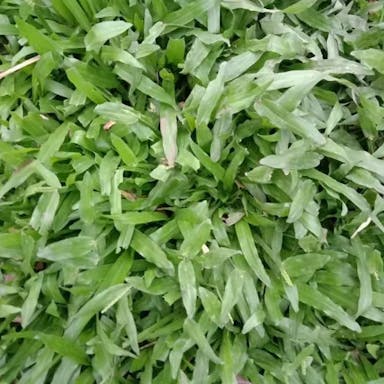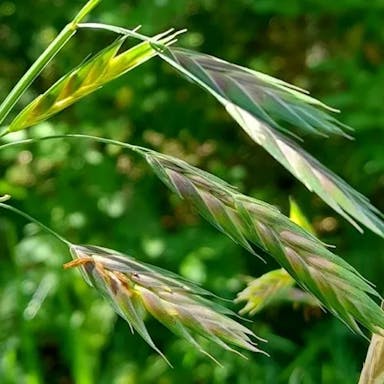Needle grass, scientifically known as Achnatherum calamagrostis, is a perennial bunchgrass native to North America. It is characterized by needles, flower heads look like needles. The flowers are pale green or purple adding a delicate touch. This plant belongs to the Poaceae family and is commonly found in dry, open areas such as prairies, meadows, and grasslands. Achnatherum calamagrostis produces small, dry fruits that contain seeds for reproduction. It can grow up to several feet in height, making it visually striking. Achnatherum calamagrostis is relatively easy to grow and maintain, requiring minimal care once established. Its qualities and adaptability to various soil types make it popular for landscaping and restoration projects.
Needle grass
- Scientific name
- Achnatherum calamagrostis
Basic Information
- Poaceae Family Achnatherum Genus Needle grass Species
- Poaceae > Achnatherum > Achnatherum calamagrostis
- 83%
- The Completeness of This Encyclopedia
Please help us complete the encyclopedia, Terrarium is a encyclopedia service to be completed with everyone in the world. Currently, this page is 83% complete. For more information on how to contribute, please click here.
- Graminoid
- Height
- 100cm ~ 200cm
- Flower Color
- Leaf Color
- Anthesis
- summer
- Sunlight Exposure
Full Sun Long hours of sunlight from morning to afternoon Partial Shade A location in the shade of a tree or where either the morning or afternoon is shaded Full Shade A place where there is no direct sunlight
- Full Sun
- Hardiness Zones
This is an indicator to know to which zone each plant can winter. Knowing the zone of each plant gives you an idea of the cold temperature resistance when grown in the ground without a roof. 2: -42.7 to -40.0 3: -39.9 to -34.4 4: -34.3 to -28.9 5: -28.8 to -23.3 6: -23.2 to -17.8 7: -17.7 to -12.2 8: -12.1 to -6.7 9: -6.6 to -1.1 10: -1.0 to 4.4 11: 4.5 to 10.0
- 5
- Cold resistance
- Good
- Heat resistance
- Fair
- Habitat of origin
- Europe
- Growth Rate
- Normal
What is Needle grass (Achnatherum calamagrostis)?
What is Needle grass (Achnatherum calamagrostis)
Flower meaning
The flower language commonly used in America for Needle grass: Examples of the language of flowers: - Needle grass: "Adversity" - Needle grass: "Isolation" - Needle grass: "Independence" Explanation: The language of flowers assigns meanings to different plants and flowers. For example, Needle grass symbolizes "Adversity," reflecting its ability to thrive in harsh conditions. This plant also represents "Isolation" due to its solitary growth patterns and "Independence" as it can survive with minimal resources.
Calendar of Needle grass (Achnatherum calamagrostis)
Calendar
Needle grass in the United States typically blooms in the spring or early summer. The flowers of Needle grass are at their best during the month of May. Blooming occurs once a year, usually lasting for a few weeks. The period required for Needle grass to bloom fully is approximately 2-3 weeks. To make the flowers of Needle grass bloom longer, ensure they receive adequate sunlight, water, and nutrients.
How to grow Needle grass (Achnatherum calamagrostis)
Watering
For optimal growth, Needle grass should be watered every 7-10 days during the growing season. Ensure the soil is evenly moist but not waterlogged, allowing the top 1-2 inches to dry out between waterings. During the dormant season, reduce watering to once every 2-3 weeks to prevent root rot. Adjust watering frequency based on environmental conditions such as temperature and humidity. Avoid overhead watering to prevent fungal diseases and focus on watering at the base of the plant. Monitor soil moisture levels regularly to maintain the appropriate balance for healthy Needle grass growth.
Soil and Fertilizer
Needle grass prospers in sandy loam earth that drains well and has a pH of 6.0 to 7.5. It wants complete sunlight for best growth. Put balanced slow-release plant food on needle grass in early spring and late summer. Put plant food at 1 pound per 100 square feet of earth. During the time plants grow, don't over-feed as it can make too much leaf growth instead of seed making. Regularly check earth quality by doing earth tests to change plant food correctly. Make sure the earth has lots of organic matter to help needle grass grow in a healthy way.
Sunlight and Place
Needle grass thrives in full sun exposure, requiring at least 6-8 hours of direct sunlight daily. It exhibits excellent heat tolerance, making it suitable for hot climates. The growing of the plant can withstand high temperatures but may have challenges in extremely cold conditions. It is necessary to give well-draining earth to stop waterlogging during winter. Needle grass likes the normal temperatures between 65-85°F (18-29°C) for best development. During summer, enough hydrating is important to prevent bending. Putting the plant somewhere with unblocked sunlight ensures its strength. It is suggested to avoid shading from close by structures or trees to make the most of sunlight ingestion.
Advanced Information of Needle grass (Achnatherum calamagrostis)
Pruning
Needle grass benefits from regular pruning to maintain its shape, promote new growth, and prevent overcrowding. Pruning is best done in late winter or early spring before new growth emerges. To prune Needle grass, use sharp, clean pruning shears to cut back dead or damaged stems to the base. Remove any crossed or rubbing branches to improve air circulation and reduce the risk of disease. After pruning, dispose of the cuttings properly to prevent the spread of pests or diseases. Regular pruning will help Needle grass thrive and remain healthy, ensuring a vibrant and well-maintained appearance in your garden.
Planting and Harvest
Needle grass is best potted in well-draining soil to prevent waterlogging, promoting healthy root growth. Ensure the pot has drainage holes to prevent water accumulation, which can lead to root rot. When planting, gently loosen the plant's roots before placing it in the pot, covering with soil and watering thoroughly. Repot every 1-2 years to refresh the soil and provide more space for growth. Mist the plant occasionally to maintain humidity levels, especially in dry indoor environments. Avoid over-fertilizing, as needle grass is sensitive to excess nutrients.
Propagation
Needle grass can be propagated through seeds, division, and cuttings. Sow seeds in well-draining soil in early spring. Divide mature plants in early spring or fall by carefully separating the roots. Take cuttings from healthy stems in spring or summer, ensuring they have at least two nodes. For leaf cuttings, select healthy leaves and place them in a moist, well-draining medium. To maximize propagation success, combine multiple methods. Harvest seeds when they are mature and dry, and store them in a cool, dry place. Regularly monitor the progress of divided plants and cuttings to ensure successful establishment.
Pests and Diseases
Needle grass is susceptible to various pests and diseases, including aphids, rust, and powdery mildew. Aphids can cause damage by sucking sap from the plant, leading to stunted growth and yellowing of leaves. Rust is a fungal disease that appears as orange or reddish-brown pustules on the leaves, affecting photosynthesis and overall plant health. Powdery mildew is another common issue, characterized by a white powdery substance on the leaves, inhibiting nutrient absorption. To prevent these problems, maintaining proper plant hygiene, such as removing infected plant parts, and providing adequate air circulation can help reduce the risk of infestation. Additionally, using insecticidal soap or neem oil can control aphids, while fungicides can manage rust and powdery mildew. Withering of the plant can occur due to the cumulative effects of these pests and diseases, leading to a decline in plant vigor and eventual death.
Habitat of Needle grass (Achnatherum calamagrostis)
Habitat
Toxicity of Needle grass (Achnatherum calamagrostis)
Health Benefits
- edible
- Inedible
- Toxic
- No toxicity
NO DATA
Toxic for dogs and cats
NO DATA
Q&A of Needle grass (Achnatherum calamagrostis)
- Is there a recommended way to choose?
Needle grass varieties range from A, B, and C. Variety A withstands lack of water rather well and fits dry climates. Variety B grows happily in damp ground and serves areas of much rain ideally. Variety C endures the cold and suits zones of harsh winters. When picking seeds, choose the ones which are plump, firm, and undamaged. Regarding seedlings, go with those sporting vibrant green foliage and sturdy stems. Make sure the roots seem well-formed and not root-bound. Skip seedlings which are wilted or discolored.












